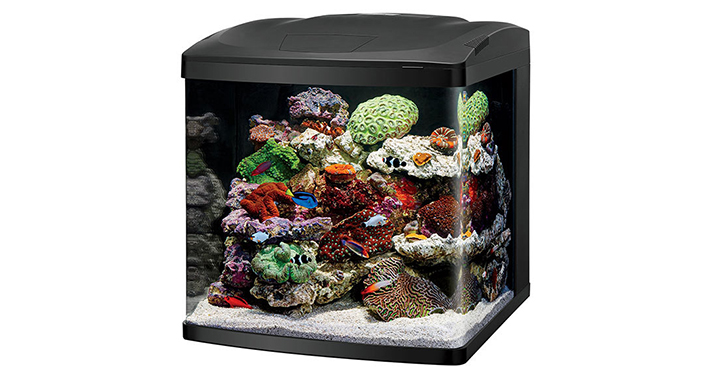
A Closer Look at Nano Reef AquariumsWhy are nano reef aquariums so popular?
It's easy to see why nano reef aquariums are so popular. Who wouldn't want a tiny portion of the ocean sitting on their desk? Especially when it costs a fraction of what larger reef systems cost. A nano reef delivers endless fascination, from the saunter of its careful invertebrates to the abrupt retreat of its bashful fish. Every alcove contains a hidden wonder. For seasoned hobbyists, a nano reef offers an exciting challenge with beautiful rewards for home or office. If you're thinking about a nano reef, consider the following for nano reef success. What is a nano reef aquarium?
In the most practical sense, all home reef aquariums are miniature reefs when compared to expansive natural reefs. However, the term "nano reef" generally refers to a miniature reef system that is typically 30 gallons or less, housing corals, invertebrates, and perhaps a few fish. That's a lot of complexity in a small space. What fish are most suited for a nano reef aquarium? Specimens suited to a nano reef include Polyp Corals and Soft Corals like Cabbage Leather, Thick Finger Leather, and Tree Corals. Mushroom Corals are also appropriate, such as green-striped, lavender, and bull's-eye. If you choose to have fish in your nano reef aquarium, small fish species such as gobies, firefish, and blennies are suitable to the nano environment. Nano system specimens must be chosen carefully to avoid overcrowding. Small fish, with a maximum adult size of only a few inches, are the best choice. They must be introduced slowly, only a few fish at a time over a period of several weeks. With Soft Corals and Polyp Corals, select species that tend to grow slowly. Fast-growing species will take over your limited aquarium space and may even overtake less hardy species. How easy is it to maintain a nano reef aquarium?
The modest size of a nano reef aquarium gives an impression of effortless maintenance. In reality, the challenges of a marine reef setup in such a confined space make a nano reef a delicate undertaking, best suited for an experienced or dedicated hobbyist. The reason is simple. These small aquariums are more susceptible to changes in water quality and temperature because they contain a smaller volume of water. When water-quality issues or temperature fluctuations occur, they can progress quickly to place great stress on the system and can ultimately result in failure. How do you achieve complete nitrification in aquariums?
In an enclosed ecosystem like the nano reef, everything is amplified - the amazement, the wonder, and also the management. Observe daily, test often, and always remedy the problems you discover within the same day.
Question :
Why are nano reef aquariums so fragile? Answer :
Many organisms that live on or around natural reefs are specialized. They evolved to thrive in the specific environmental conditions of a reef. To be successful at reef keeping, all of these conditions must be recreated in the extremely small environment of an aquarium. Related Articles
|
|
|


